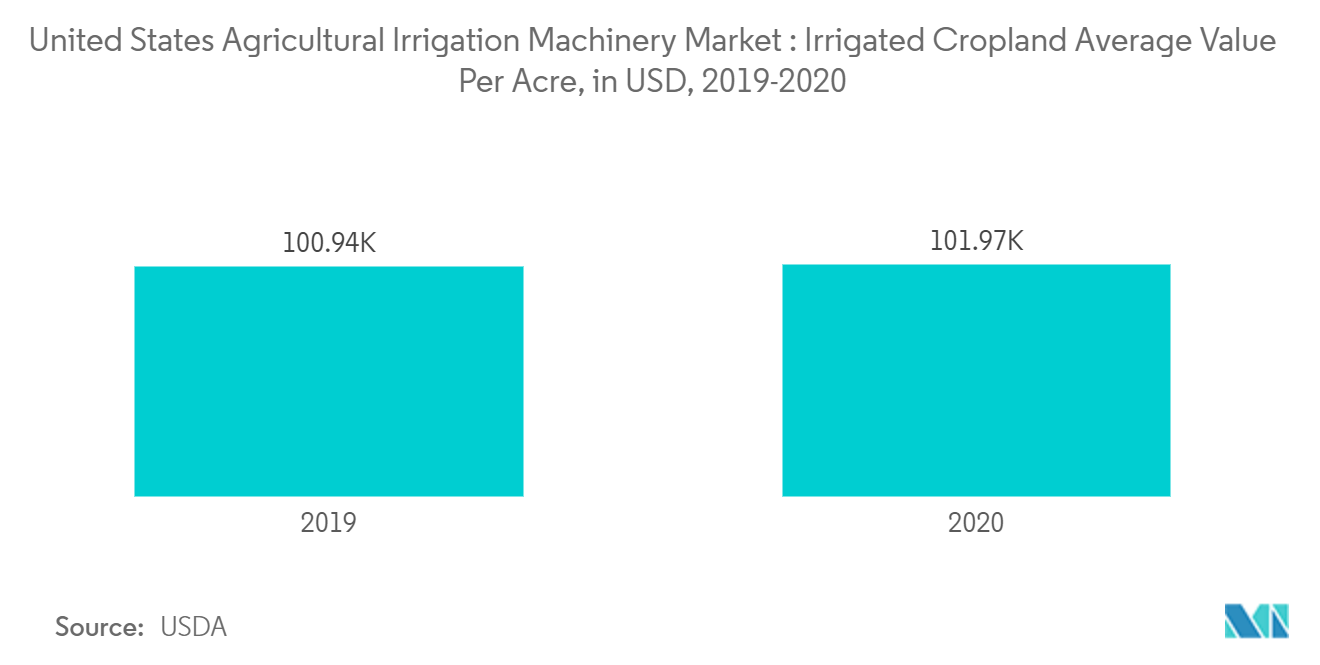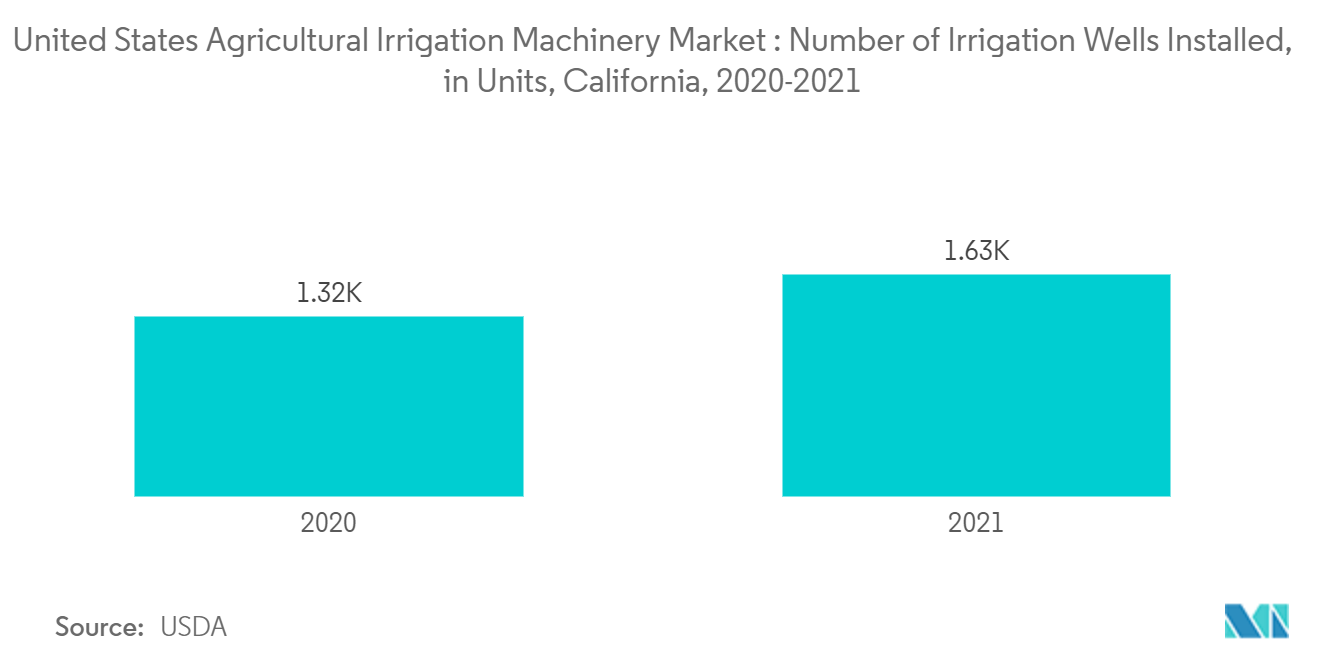Market Trends of United States Agricultural Irrigation Machinery Industry
Increasing Awareness of Micro-irrigation
- The irrigation systems market is primarily driven by factors such as the need to increase crop productivity while addressing water scarcity issues. Thus, governments in various regions are focusing on formulating initiatives to increase the usage of irrigation systems, such as drip, sprinkler, and pivot, while limiting water shortage.
- With water increasingly becoming a scarce commodity, farmers have been seeking novel ideas to grow more crops with the same quantity of water. Irrigation systems, including sprinklers, and drippers, are witnessing high demand. This is expected to augment the growth of the market studied.
- The agricultural sector is the predominant consumer of water. Water scarcity is a major challenge and a key driver for using micro-irrigation machinery systems. Micro irrigation systems such as drip and sprinklers reduce water wastage and increase productivity. There has been an increasing awareness about the benefits achieved by adopting micro irrigation systems among farmers. Hence, the shift from gravity irrigation systems to pressure-sprinkler irrigation systems has been observed, particularly in the country's western states.
- Approximately 58 million acres of land have been irrigated using micro irrigation systems in the United States. Moreover, increasing technological advancements in micro irrigation systems offer ubiquitous ease to large farmers in the agricultural sector to control and monitor the water flow and intake of plants, which favors market growth.

California Dominates the Market in Terms of Irrigation System
- Irrigation predominantly occurs in the Western parts of the United States. The western states accounted for 81% of the total irrigation withdrawals and had 74% of the total irrigated lands in the United States. California ranks first among highly irrigated acres of land, constituting nearly 7.9 million acres.
- About 82% of the cropland is irrigated, and the most irrigated acres by crop are corn, forage (hay, silage, etc.), and orchards. The primary irrigation method is gravity, accounting for 51%, followed by 31% micro-irrigation and the remaining 18% by sprinkler irrigation. Therefore, there will be an increasing demand for the agricultural irrigation machinery market, particularly in the Western region of the United States.
- Irrigation wells typically have higher capacity and pump more groundwater than domestic wells to provide water to farms that feed millions of people throughout California and the world. Over the last five years, 6,757 irrigation wells have been installed across the state compared to the 58,845 total number of irrigation wells installed till the current year. The year-to-year number of new irrigation wells has fluctuated from a low of 1,033 in 2018 to a high of 1,626 in 2021.
- New irrigation wells installed in California are much more concentrated than domestic wells. Within the last water year, Tulare County (440) installed more new irrigation wells than any other county in the state, accounting for approximately one out of every six (17 percent), which will boost the demand for irrigation systems in the province in coming years.


